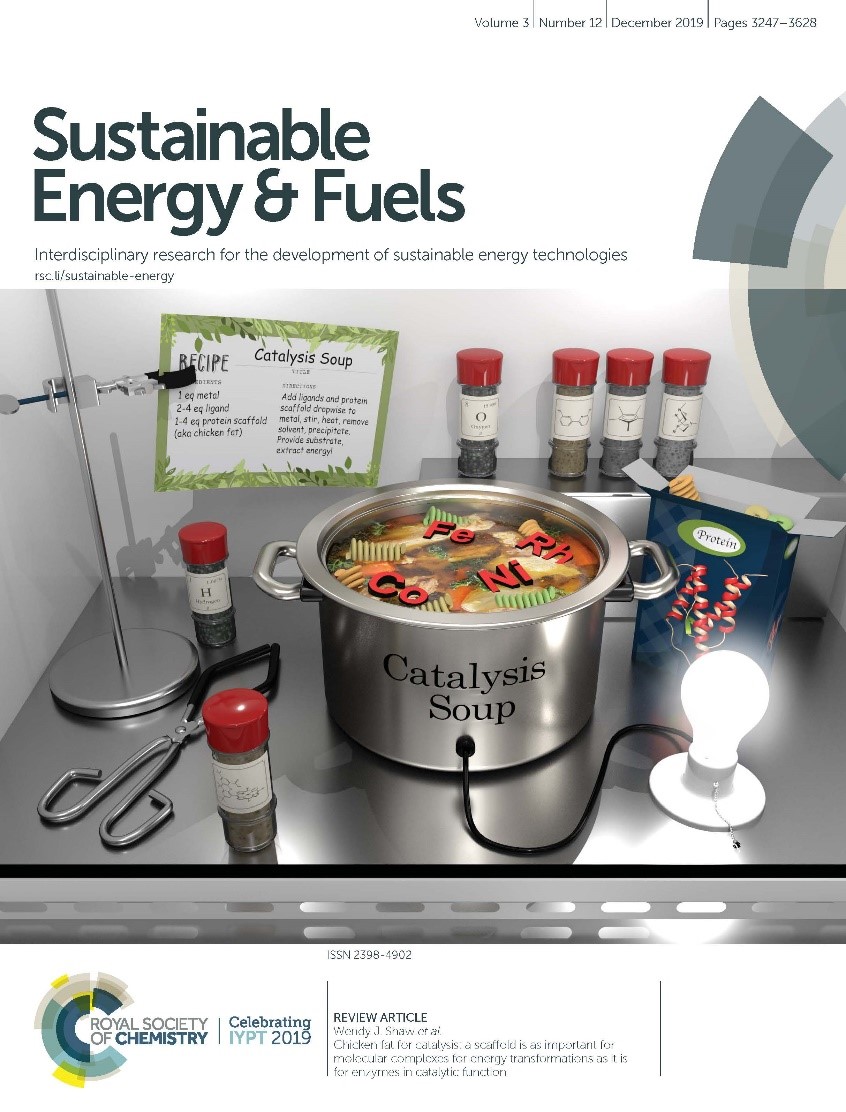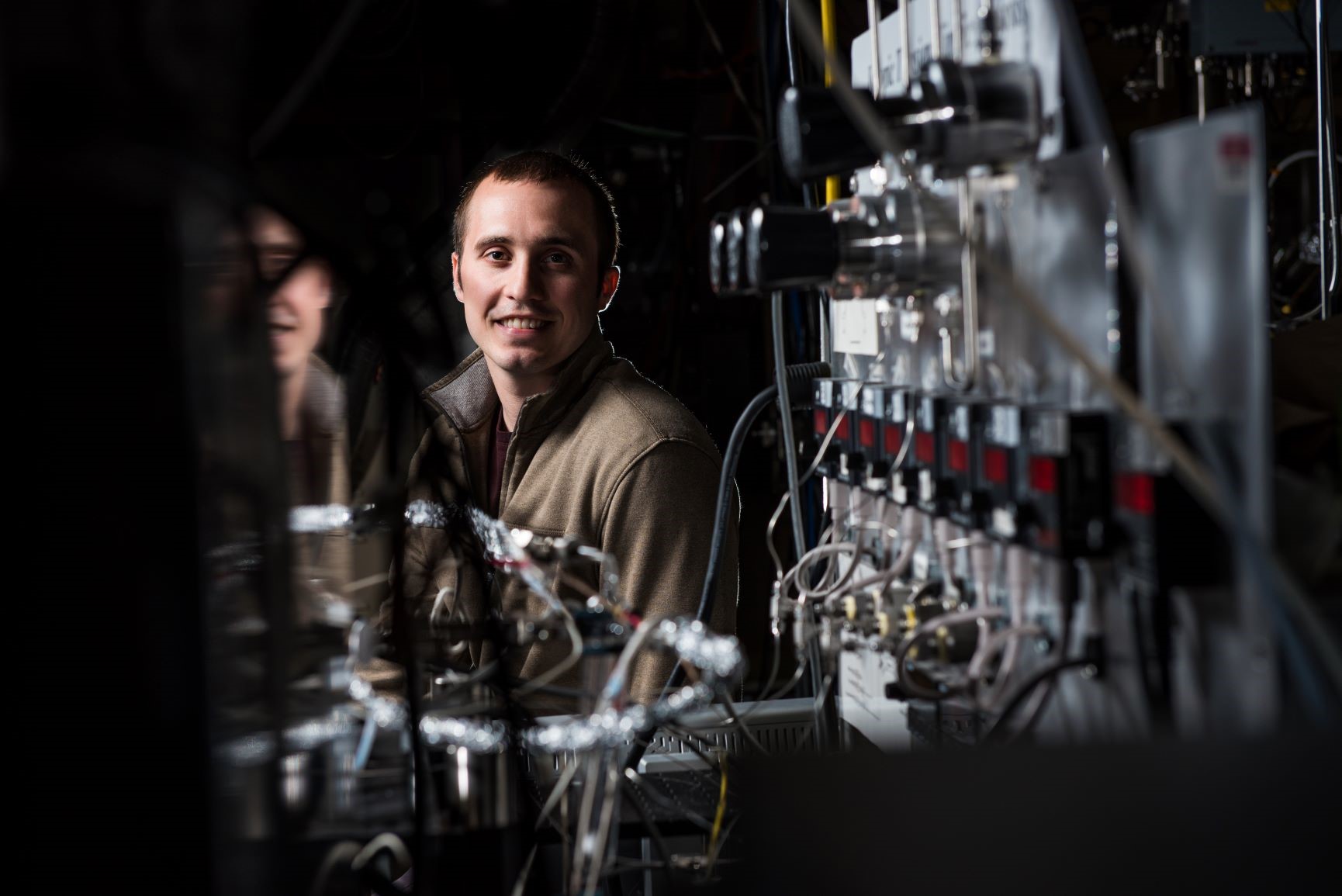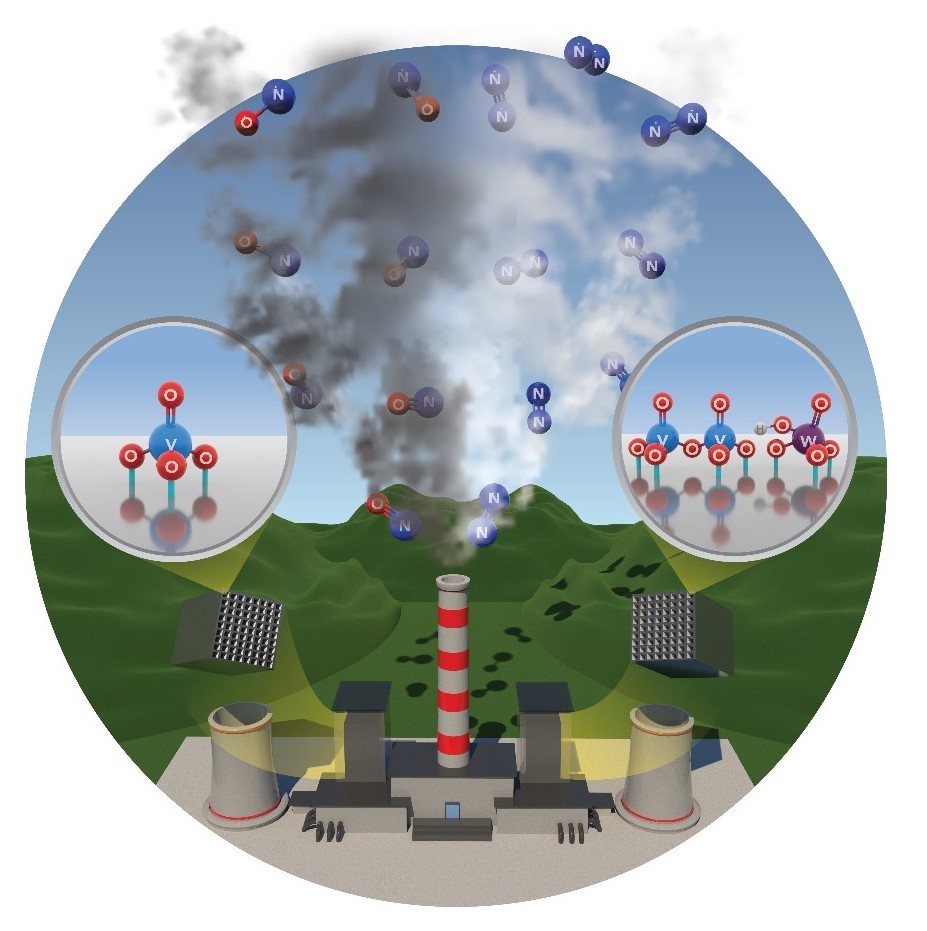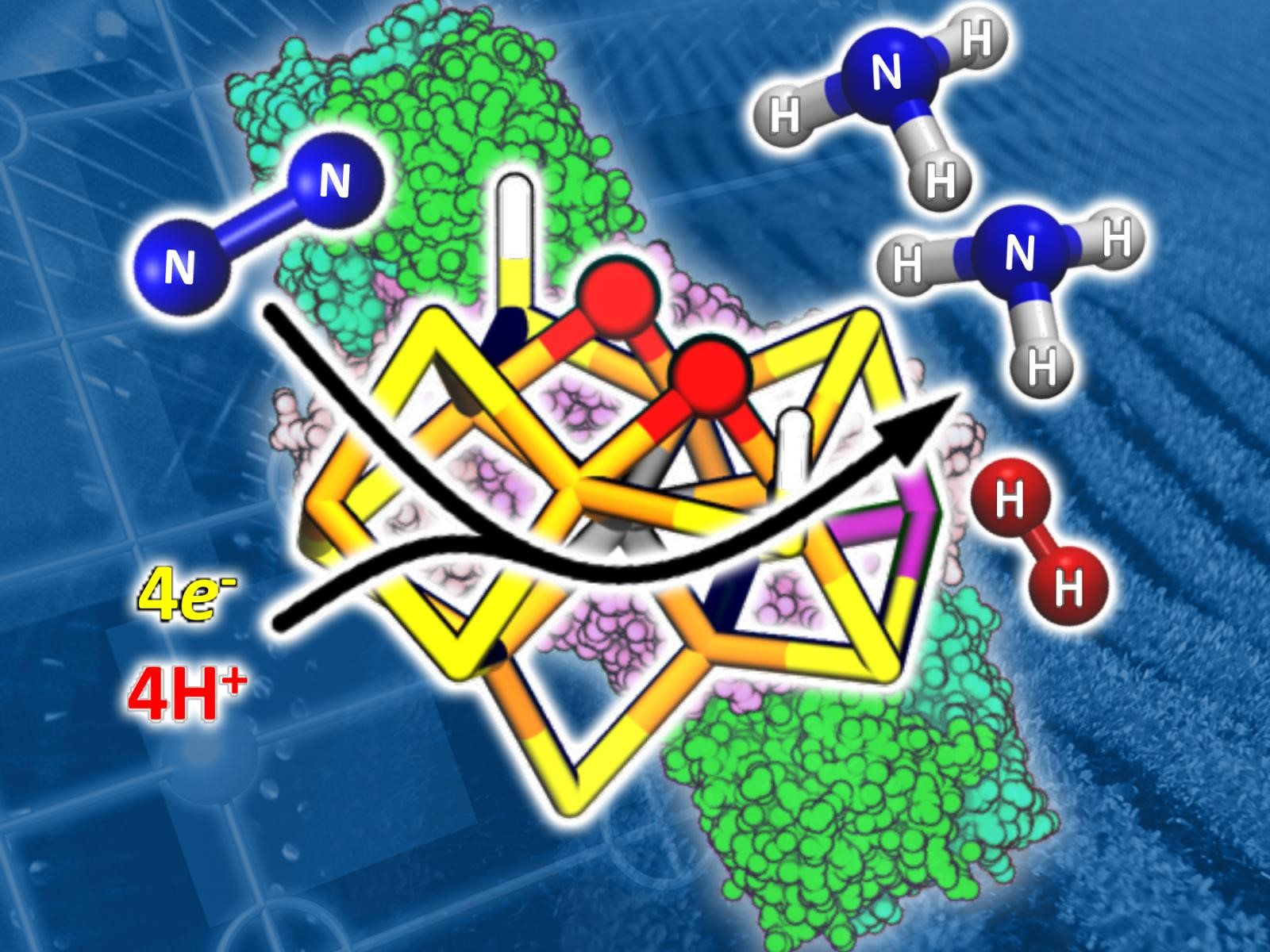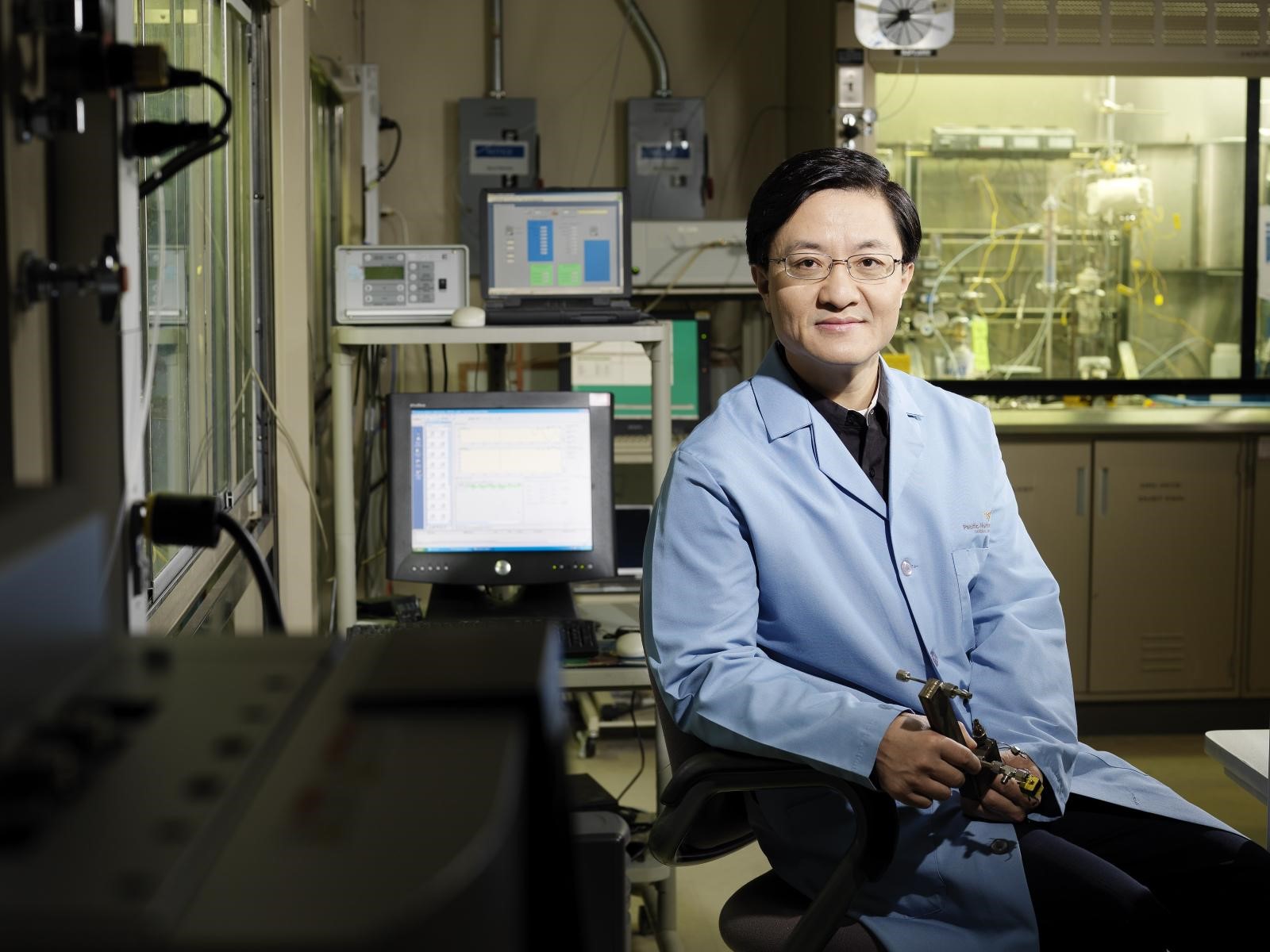The Institute for Integrated Catalysis at Pacific Northwest National Laboratory facilitates collaborative research and development in catalysts for a secure energy future.
-
Chicken Fat for Catalysis
IIC's Joe Laureanti and Wendy Shaw co-authored a featured cover article review in the journal Sustainable Energy & Fuels in December 2019 with former PCSD scientist Molly O'Hagan.
-
PNNL Solves Decade-Old Mystery in Chemical Transformations
Researchers at PNNL have solved a mystery for a chemical reaction essential for fuel and fertilizer production. The so-called water-gas shift reaction forms hydrogen fuel and carbon dioxide from carbon monoxide and steam.
-
Getting Clear about Clean Air
Nitrogen oxides, also known as NOx, form when fossil fuels burn at high temperatures. When emitted from industrial sources such as coal power plants, these pollutants react with other compounds to produce harmful smog. To mitigate these NOx emissions, engineers developed a process called selective catalytic reduction (SCR) where NOx passes through a converter, or air scrubber, that transforms the dangerous chemical into harmless nitrogen gas.
-
Setting the Stage for Fuel-Efficient Fertilizer
Ammonia, the primary ingredient in nitrogen-based fertilizers, has helped feed the world since World War I. But making ammonia at an industrial scale takes a lot of energy, and it accounts for more than one percent of the world's total energy-related carbon emissions.
-
Making Every Atom Count to Reduce Auto Emissions
Researchers at Pacific Northwest National Laboratory and their collaborators have made a significant improvement to a catalyst that is more rugged and can reduce tailpipe pollution at lower temperatures than existing methods - oh, and it may turn out to be cheaper too.
Catalysis is key to sustainable development that secures energy independence, and it is critical to the transition from the current use of carbon resources for energy and chemicals towards solely using recycled and renewable carbon as well as renewable energy resources. Currently, 80 percent of all chemical products and energy carriers are made using catalysts in at least one of the processing steps, producing an economic impact estimated to be over $10 trillion per year worldwide. The long-term transition to a sustainable economy requires not only reinventing the large processes of today, but also enabling the harvest and use of dispersed renewable carbon and energy resources. These challenges define the mission of the Institute for Integrated Catalysis (IIC):
- Provide the insight, the synthetic tools, and the engineering concepts to enable catalyzed chemical and chemical-electrical energy interconversions to minimize the carbon footprint of the global energy system.
- Develop experimental and theoretical tools to better understand the structure and properties of working catalysts to be used as guidelines for novel catalyst generations and novel reaction routes.
- Translate the fundamental insight into novel and improved catalytic technology.

The IIC integrates more than 120 scientists and engineers from different organizations at Pacific Northwest National Laboratory. These organizations include the Physical and Computational Science Directorate (PCSD), the Environmental Molecular Sciences Laboratory (EMSL), and the Energy and Environment Directorate (EED) and encompass a wide range of catalysis disciplines. The cross-disciplinary collaboration and mutual influence produces a unique creative environment, which is a prerequisite for transformative research. The key scientific challenges addressed within the IIC focus on adding hydrogen to oxo-functionalized carbon resources (such as biomass constituents or carbon dioxide), storing electric energy in hydrogen, oxygen, or nitrogen (key focuses of the Center for Molecular Electrocatalysis, an Energy Frontier Research Center), manipulating carbon-carbon and carbon-heteroatom bonds, and exhaust catalysis.

